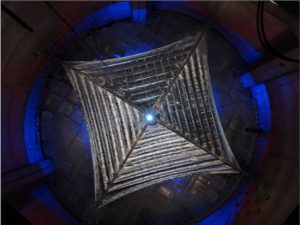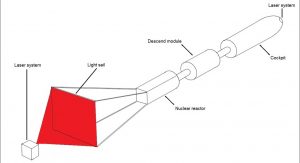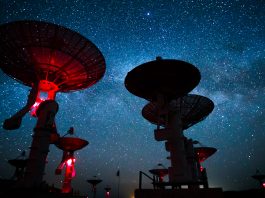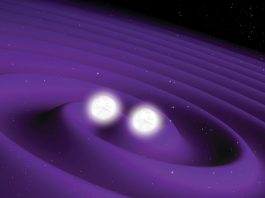J. Gouw outlines the idea for Solar One – a concept for manned interstellar travel proposed by astronomer Alberto Caballero.
In 2015, the Planetary Society, a non-profit organisation that promotes science, launched a small satellite with a solar sail called ‘LightSail’, which successfully completed the test flight. In 2019, the same organisation launched LightSail 2, another successful test. However, it is important to bear in mind that these light-sails are propelled by sun light, and the solar radiation pressure is small (just 1,400 watts/m2). For this reason, the concept of Solar One, a concept for the first manned interstellar mission, involves the use of a laser system, as lasers can provide radiation pressures significantly higher than the Sun.

Starshot
Breakthrough Initiatives, a science project founded by entrepreneur Yuri Milner, announced in 2016 the design of a beam-powered spacecraft that could reach, in theory, 20% the speed of light. This project, StarShot, could become a reality by 2036. The idea is to launch 1,000 nanocrafts equipped with light sails, and these sails would be propelled by a 100 gigawatt laser array based on Earth. The nanocrafts would be sent to our nearest potentially habitable exoplanet, Proxima b, in order to gather imagery.
The Starshot project is the best option for unmanned interstellar travel. The problem, however, is that the light sail used would only have a size of 4x4m, a dimension not suitable for human-crewed spacecraft.
In just two minutes, a one-gram spacecraft would be pushed by the lasers, achieving a force of 500 Newtons and an acceleration of more than 50,000 Gs. No human could withstand such acceleration. The maximum G-force that humans have been able to withstand is 46G’s.

Solar One
For this reason, the concept of Solar One proposes to use a light sail significantly larger (1×1 mile) that could provide a higher thrust and a G-force perfectly bearable by the crew. Solar One is, therefore, the first plausible proposal for a human-crewed interstellar spaceship. Alternative possibilities such as nuclear fusion and antimatter propulsions have been proposed, but both entail the production of enormous quantities of energy. In this sense, Solar One would use technologies that already exist or could exist in this decade, namely small nuclear fusion reactors, extremely large light sails, and high energy laser weapons. It also introduces a new type of manned interstellar spaceship that would combine beamed and photon propulsion.
The light sail of the spaceship would be propelled by a 150-Terawatt laser system placed in orbit, and this system would obtain the necessary energy from small nuclear fusion reactors or an antimatter engine. The light coming out from the laser system could be reflected by parabolic mirrors that would gradually adjust their orientation in order to change the divergence of the beam hitting the light sail. A four-crew spaceship with a total mass of around 100 tonnes would be powered by a 1,600×1,600m light sail. In theory, it would be possible to achieve 30% the speed of light if the spaceship constantly accelerates at 1 G during the first 100n days of the trip. The high-energy laser and large sail would give to the spaceship a force of hundreds of thousands of Newtons. To decelerate, the spacecraft would have a laser system placed at the front of the cockpit that would emit light in the same direction as the spacecraft moves. This laser system would also work with nuclear fusion or antimatter.

Challenges for the crew
At 30% the speed of light, it would be possible to reach our nearest star system in only 16 years. This period would certainly be a challenge for the crew. The maximum time that any human has been in space is 437 days. The effects of zero gravity on the human body after that period are unknown. On average, astronauts exercise for two hours each day on the International Space Station (ISS). The crew of Solar One would probably need to have longer training sessions.
The list of challenges to build and travel with Solar One is long. The main challenge is to build high-energy lasers that are able to continually emit light. Another important challenge is to reduce the weight of the small nuclear fusion reactors. It would be critical to protect the cockpit, the light sail, and especially the nuclear reactor, from the potential impact of micro-asteroids, for instance. The light sail could be rolled up when the laser system is not active, but any impact on the nuclear reactor could be catastrophic for the crew. They could have a secondary propulsion system to separate from the spaceship if that were to happen, but the chances of survival in interstellar space would be minimal. It is for this reason that it would be important to have a radar that could detect potentially hazardous asteroids in order to bypass them.
J. Gouw
https://www.youtube.com/channel/UC2kkCGRqZWaSIK3BmLC8vaw
Please note, this article will also appear in the second edition of our new quarterly publication.









